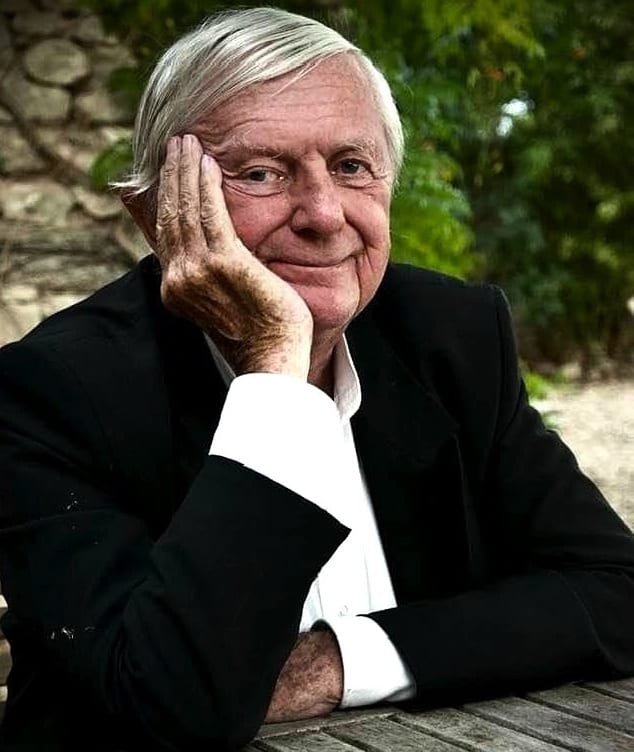hugh newell jacobsen's maryland legacy
Hugh Newell Jacobsen (1929-2021) was a world-renowned architect known for his elegant, minimalist style of architecture.
Known for his work on Jacqueline Kennedy Onassis’ home in Martha’s Vineyard and for restoring the U. S. Embassy in Paris, Jacobsen made an impact all over the world, including in Maryland.
Over his career, Jacobsen designed over 400 houses and received more than 100 design awards.
This article will take an in-depth look at his career in Maryland and his influence on modern architecture.
early life & career beginnings
Born on March 11, 1929 in Grand Rapids, Jacobsen lived in Michigan for his early years before his family moved to Washington, D. C. when his father took a job with the War Shipping Administration during World War II.
After high school, Jacobsen studied fine art at the University of Maryland. Jacobsen planned to become a portrait painter, but pivoted to architecture for more job security.
Jacobsen then worked for architect Philip Johnson (known for his famous Glass House) in New Cannan, Connecticut, in the 1950s. He later returned to D. C. and worked for Keyes, Lethbridge, and Condon from 1957-1958.
In 1958, Hugh Newell Jacobsen opened his own architectural firm.
jacobsen's architectural style
Since the firm’s founding, Jacobsen has designed buildings all over the world.
He’s most known for his pavilion-based homes, which have simple rectangular plans and gabled roofs.
While other architects at the time were deeply inspired by European buildings, Jacobsen drew inspiration from traditional American homes, particularly rural buildings like barns, smokehouses, and detached kitchens.
One of his most famous home designs was built for Jacqueline Kennedy Onassis in Martha’s Vineyard, where residents worried his modern designs would clash with the historic cottages common in the area.
Though his buildings drew inspiration from the regions they were built in, Jacobsen’s architecture had consistent styling with frequent use of large windows, 45-degree pitched roofs, clean lines, and minimalistic features.
The modular, minimal designs were called “Monopoly houses” by the Washington Post, and it’s easy to see the resemblance to the classic board game.
While his architecture might appear simple, his designs were elegant and modern. Jacobsen himself said, “Good architecture never shouts…it takes a double take to know [it] is there at all.”
significant works in maryland
Jacobsen has contributed many significant works to Maryland, including the alumni center at the University of Maryland.
The Alumni Center was constructed in 1982, starting with the renovation of the basement before making major changes to the second floors. The building was renovated so it could fit more people and accommodate bigger staff workspaces.
Hugh Newell Jacobsen’s work can also be found in Baltimore City in the Bolton Hill neighborhood.
Bolton Hill is one of Baltimore’s most elegant neighborhoods and features 35 homes designed by Jacobsen (Bolton Square) that sell for upwards of $400,000 today.

Each of these homes has its own walled garden, and is adjacent to a common private park, or “eclipse.”
Jacobsen was awarded the opportunity to design Bolton Square and built it in 1967, which was a tumultuous time in Baltimore’s history due to riots following Martin Luther King Jr.’s assassination.
The designs themselves also reflect the post-war time period. Jacobsen’s buildings feature elements of Brutalism such as large brick surfaces, as well as International Revival elements like large panes of glass. Additionally, the pitch of the roofs reference the “Shed” style that was popular in that era.

impact on maryland architecture
Jacobsen’s work has a lasting legacy in Maryland and changed how people saw modern design in the area.
His work in Maryland focused on using the natural landscape and history of the construction sites to inspire the buildings’ designs.
He used simple shapes, clean lines, and used unique window designs and placement to bring in natural light. All of these features make his buildings easily recognizable around the state.
The buildings he designed won many awards and recognition, including the Cedar Architecture Award, the Southern Home Award, the American Wood Council’s Merit Award, and more. His designs were praised for their modernity and innovation, and brought more attention to Maryland’s architecture.
Hugh Newell Jacobsen's impact on Maryland's architecture is profound. His legacy in Maryland will always be remembered as a blend of innovation, beauty, and simplicity.
Jacobsen's work reminds us that in the world of architecture, (to quote Mies van der Rohe) “less can indeed be more.”
Share this:


